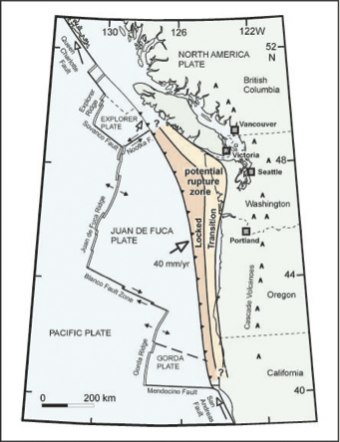Novice
The Incorporated Research Institutions for Seismology (IRIS) Consortium has partnered with NESTA to produce this special, seismology focused issue The Earth Scientist. The theme for this issue is Modernizing Your Seismology Education. In this issue, you will find a collection of five invited articles that showcase the complexity and wealth of new teaching opportunities that exist within seismology education. This issue features a two article sequence introducing the geological phenomena of Episodic Tremor and Slip, one of the greatest seismological discoveries in the past decade, and describes how this phenomenon can be conveyed to students using models and kinesthetic learning. Another article explores how the USArray, a currently deployed dense network of seismometers, and resulting data can be leveraged to generate new visualizations to enhance the conceptualization of seismic waves in the classroom. The fourth article explores the ever-growing literature base of students’ alternative conceptions of geoscience topics and suggests strategies to use this to inform your curriculum, instruction and assessment. The final article introduces both new science on intraplate seismic zones and a physical model that can be used to explore this information with students.
Inside This Issue
| Title | Author |
| From the President | |
| From the Executive Director | |
| Guest Editor’s Corner | M. Hubenthal |
| Twenty-five years ago in TES | |
| About the Cover | M. Tuttle |
| Episodic Tremor and Slip: Potential Clues to the Earthquake Process and How Faults Slip |
M. Brudzinski |
| Episodic Tremor and Slip in a Middle School Classroom? Absolutely! Relevance and Kinesthetic Methodologies Merit Inclusion in 8th Grade Earth/Space Science Class |
R. Groom, S. Olds, R. Butler, J. Johnson |
| About the Poster | M. Hubenthal |
| USArray Visualizations Show Seismic Waves Sweeping Across the U.S |
R. Butler, C. Hedeen, R. Groom |
| Understanding Earth Processes: Student Alternative Conceptions about Geophysics Concepts |
J. Libarkin, E. Geraghty Ward |
| A Big Squeeze: Examining and Modeling Causes of Intraplate Earthquakes in the Earth Science Classroom |
M. Hubenthal, S. Stein, J. Taber |
The National Earth Science Teachers Association is a nonprofit 501 (c) (3) professional educational organization, founded in 1983, whose purpose is the advancement, stimulation, extension, improvement, and coordination of Earth Science education at all educational levels. Join NESTA today to recieve all issues of their journal!
Hubenthal, M., Ervin, T. (2011) The Earth Scientist: Special Issue, (Eds.), 27(1), 1- 39.

Students work in small groups to analyze and interpret Global Positioning System (GPS) and seismic data related to “mysterious ground motions” first along the northern California coastline, and then in British Columbia. This activity emphasizes the analysis and synthesis of multiple types of data and introduces a mode of fault behavior known as Episodic Tremor and Slip (ETS)
We encourage the reuse and dissemination of the material on this site as long as attribution is retained. To this end the material on this site, unless otherwise noted, is offered under Creative Commons Attribution (CC BY 4.0) license